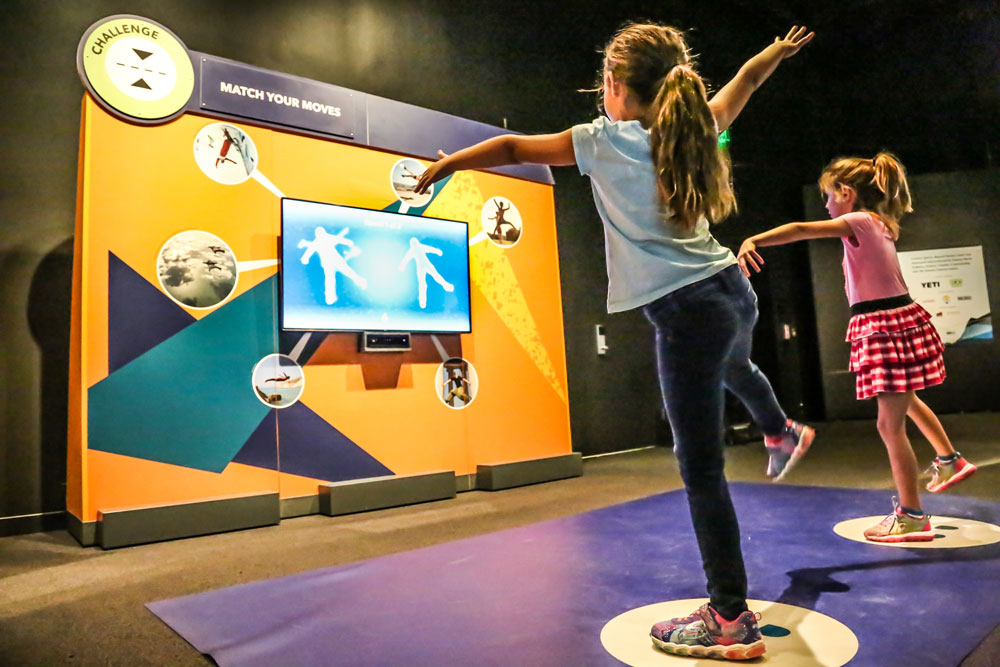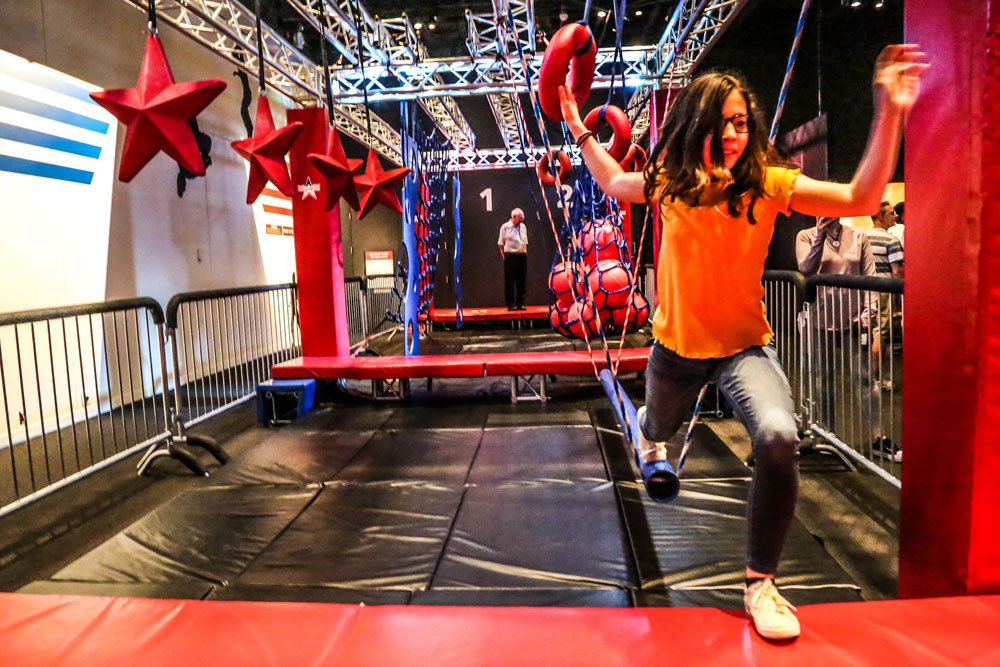
Interactive stations throughout the gallery allow children and adults alike to compare their skills with those of extreme athletes. Here, students try to make their body match the virtual athlete’s.
Have you ever wondered what it feels like to soar through the air in a wingsuit, climb a towering rock wall, or race the backcountry slopes? Whether you are an avid risk taker or prefer to play it safe, the newest traveling exhibition at The Denver Museum of Nature and Science has something for all types. Extreme Sports: Beyond Human Limits lets visitors experience the minds and bodies of extreme athletes.

Extreme Sports: Beyond Human Limits Curator Garth Spellman demonstrates how to walk the highline that serves as one possible entrance to the exhibit.
The decision to bring it to DMNS was a no-brainer, says Exhibit Curator Dr. Garth Spellman. With Colorado being ground central for many extreme athletes, the Museum took the opportunity to add profiles of 15 Colorado athletes who are world renowned in their sports.

Willoe Hartman conquers the ninja course developed in partnership with Ninja Nation.
The obstacles will change throughout the exhibit’s run to challenge repeat visitors.
What does it take to be an extreme athlete? Interactive games test visitors’ body control, spatial awareness and focus. They can take a quiz to determine their own “sensation seeking score” and compare their score to those of the featured athletes.

Students at one of the exhibit’s many video kiosks learn the physics of piloting a wingsuit.
Search and rescue teams that help athletes in distress are featured in one area; another explores the injuries many of athletes have endured. The importance of athletes knowing their own limits and what they can do to minimize risk is a recurring theme. The exhibit clearly is not encouraging novices to go out and try these high risk activities.

Children visiting the museum on a school field trip try out the kid-sized climbing wall.
The museum hopes guests will walk away with a better idea of what makes these competitors do what they do, says Spellman. “They are not adrenaline junkies. They are highly trained athletes with extreme technical skill. And they have knowledge of specialized gear that allows them to reduce risk.”
The final section of the exhibit is set up according to the location of the sport: in the air, on snow and ice, in the water, on the rocks, and on the ground. Hands-on stations in these areas invite participants to get a taste of extreme activities. Visitors can use augmented reality to experience flying in a wingsuit or go in the immersion room to take a ride on a mountain bike or in a whitewater kayak. Kids can try the child-sized rock climbing wall and run a Parkour course. Those over 48 inches tall can even try their luck on an ever-changing ninja course built by Ninja Nation.
Activities for visitors of all ages make the exhibition both interactive and family friendly. Boulder resident and museum member Ashley Chandler says her two children, Norah and Miles, couldn’t wait to explore the exhibit, particularly the climbing wall and the Ninja Course. “Just being able to interact physically was a really cool addition,” says Chandler. “It was interesting to see all the science behind extreme sports.”
Extreme Sports provides a look at what makes these athletes tick. “The exhibit really focuses on the psychology behind their motivations, [offering] a little bit of neuroscience behind why these athletes are pursuing these sports,” says Spellman
Extreme Sports: Beyond Human Limits runs now through April 12, 2020. The exhibit is free with general admission to the museum.
This U.S. debut of the exhibition was developed and produced by Science North in partnership with the Ontario Science Centre.




0 Comments